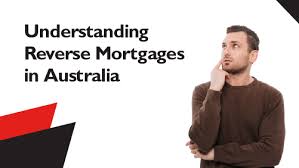Reverse Mortgages in Australia: A Complete Guide for 2025 Retirees

Understanding Reverse Mortgages in Australia
As more Australians look for ways to fund their retirement years, reverse mortgages have become an increasingly popular option. A reverse mortgage allows homeowners aged 60 and over to access part of the equity in their home while continuing to live in it. This financial product helps retirees improve cash flow, pay for living expenses, or fund home renovations without needing to sell their property. For those interested in learning more, reverse mortgages in Australia offer flexible solutions designed to meet the unique financial needs of retirees.
What is a Reverse Mortgage?
A reverse mortgage is a loan that enables senior homeowners to convert a portion of their home equity into cash. Unlike traditional loans that require monthly repayments, a reverse mortgage allows borrowers to defer repayment until they sell their home, move into permanent aged care, or pass away. The interest charged on the loan compounds over time and is added to the balance. Borrowers retain full ownership of their property and can continue living there as long as they meet the loan’s conditions, such as maintaining the home and keeping it insured.
How It Works
The amount that can be borrowed depends on several factors, including the borrower’s age, the property’s value, and the lender’s policy. Generally, the older the borrower, the higher the percentage of equity they can access. Funds from a reverse mortgage can be received as a lump sum, a regular income stream, a line of credit, or a combination of these options. Repayment occurs when the home is sold, and any remaining equity belongs to the homeowner or their estate.
Why Reverse Mortgages Appeal to Retirees
For many retirees, their home represents their most valuable asset. A reverse mortgage provides an opportunity to unlock that wealth while staying in familiar surroundings. It offers financial flexibility, helping retirees maintain their lifestyle, cover unexpected costs, or support family members if desired.
Financial Independence in Retirement
Reverse mortgages allow retirees to remain financially independent by creating an additional income stream. Instead of relying solely on pensions or savings, seniors can use their home equity to supplement their income. This can reduce financial stress and make it easier to manage day-to-day expenses.
Flexibility of Fund Access
Borrowers can choose how they receive their funds, giving them control over their financial planning. Some may prefer a lump sum for specific expenses, while others may choose regular payments to cover ongoing costs. The flexibility of the reverse mortgage structure allows borrowers to tailor their loan to their personal needs.
Eligibility Criteria for Reverse Mortgages
Reverse mortgages are designed specifically for older homeowners who meet certain eligibility requirements. These criteria ensure that borrowers can manage the loan responsibly and benefit from the arrangement.
Basic Requirements
- The primary applicant must be at least 60 years old.
- The property must be located in Australia and owned by the borrower.
- The property must be maintained and insured.
- The loan amount depends on the age of the youngest borrower and the property’s value.
Lenders conduct a detailed assessment of the borrower’s financial situation and property to determine suitability. Borrowers are encouraged to seek financial and legal advice before proceeding to ensure they fully understand the implications.
Features and Protections for Borrowers
Reverse mortgages in Australia are governed by regulations designed to protect seniors. These features provide peace of mind and ensure borrowers are not exposed to undue financial risk.
No Negative Equity Guarantee
A key safeguard is the no negative equity guarantee. This ensures that borrowers or their estate will never owe more than the market value of the home when it is sold. This means even if property values decline, borrowers are protected from owing more than their home is worth.
Retaining Home Ownership
Borrowers maintain full ownership of their property under a reverse mortgage. They can continue living in their home for as long as they wish, provided they comply with loan conditions such as property upkeep and insurance coverage. This allows retirees to enjoy stability and comfort throughout their retirement.
Voluntary Repayments
Although regular repayments are not required, borrowers can choose to make voluntary payments toward the loan or interest if they wish. This flexibility allows them to manage their debt more effectively and reduce the overall interest accrued.
How Interest and Costs Work
Interest on a reverse mortgage compounds over time, meaning interest is added to the loan balance each month. The total amount owed grows gradually, as both the original loan and accumulated interest accrue further interest.
Understanding Compound Interest
Because there are no monthly repayments, the interest is added to the balance continuously. The longer the loan is active, the more the total debt grows. Borrowers should consider this when deciding how much to borrow and how long to keep the loan.
Fees and Charges
In addition to interest, reverse mortgages may include setup fees, valuation fees, and legal costs. Brokers and lenders provide a breakdown of these charges before the loan agreement is finalized. It’s essential for borrowers to review all costs carefully to make sure the loan aligns with their financial goals.
The Application Process
Applying for a reverse mortgage in Australia involves several steps. Each stage ensures that borrowers understand the terms of the loan and receive appropriate guidance.
Step 1: Initial Consultation
Borrowers meet with a reverse mortgage specialist to discuss their goals and financial situation. The advisor explains how the product works, including eligibility, interest rates, and repayment conditions.
Step 2: Property Valuation
The lender arranges an independent valuation to determine the market value of the home. This valuation helps calculate the maximum amount that can be borrowed.
Step 3: Loan Offer and Documentation
Once eligibility and valuation are confirmed, the lender provides a formal loan offer. Borrowers receive detailed documentation outlining terms, conditions, fees, and repayment options.
Step 4: Independent Legal and Financial Advice
Before signing the agreement, borrowers must seek independent legal and financial advice. This step ensures they understand all implications of the loan and can make an informed decision.
Step 5: Settlement and Fund Release
After completing all necessary documentation, the loan is settled, and funds are released based on the chosen payment option. Borrowers can then use the funds as planned.
Potential Risks and Considerations
While reverse mortgages offer flexibility, they also come with long-term implications that borrowers must consider carefully.
Impact on Inheritance
A reverse mortgage reduces the amount of home equity available for inheritance. Since the loan and accumulated interest are repaid when the home is sold, the remaining estate value will be smaller. Borrowers should discuss this aspect with family members to manage expectations.
Effect on Government Benefits
Funds received from a reverse mortgage may affect eligibility for certain government benefits such as the Age Pension. The impact depends on how the funds are used and whether they are classified as assets or income. Consulting with a financial advisor can help clarify this issue.
Property Obligations
Borrowers must maintain the condition of their property, pay council rates, and ensure the home is insured. Failure to meet these requirements may breach the loan agreement.
Managing a Reverse Mortgage Responsibly
A reverse mortgage can be a valuable financial tool if managed correctly. Borrowers should plan ahead, keep records of all transactions, and review their financial situation regularly.
Regular Reviews
Periodic reviews with a financial advisor help ensure that the loan continues to meet the borrower’s needs. This allows for adjustments if financial goals or living arrangements change.
Considering Voluntary Payments
Making occasional payments toward the loan balance or interest can significantly reduce long-term costs. Even small repayments can help preserve home equity over time.
Estate Planning
Integrating a reverse mortgage into a broader estate plan ensures that both the borrower and their beneficiaries understand how the loan will be repaid and how remaining assets will be distributed.
Conclusion
Reverse mortgages in Australia provide retirees with a practical way to access home equity without selling their property. They offer flexibility, financial independence, and the security of remaining in the family home. By understanding the structure, costs, and obligations involved, seniors can make informed decisions that align with their retirement goals. With professional advice and careful management, a reverse mortgage can serve as a valuable part of a well-balanced retirement strategy, helping retirees enjoy greater comfort and stability throughout their later years.





